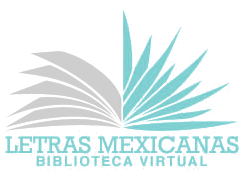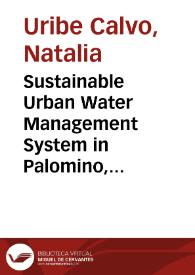Sustainable Urban Water Management System in Palomino, Colombia. An Urban Water Metabolism Approach
Contenido de la obra
Contenido de la obra
Registro bibliográfico
Registro
- Título: Sustainable Urban Water Management System in Palomino, Colombia. An Urban Water Metabolism Approach
- Autor: Uribe Calvo, Natalia
- Publicación original: 2016
- Descripción física: PDF
-
Nota general:
-
This master thesis is an attempt to contribute to the understanding of urban water systems through the use of the urban metabolism (UM) framework. By developing steady-state models with STAN, a software used for material flow analysis (MFA), the urban water flows are quantified and analyzed as they enter the system boundary and are transformed by anthropogenic processes.
Such a model has been applied to a specific urban water system in the town of Palomino, Colombia, to research the main barriers and opportunities for a sustainable urban water system. The area under study corresponds to a system boundary of 4.83 km2, and the analysis was performed for the year 2015. A detailed examination of Palomino’s water system was established based on primary data collection through survey processes, mapping, and semi-structured interviews.
Based on the qualitative and quantitative characteristics of the water system, a conceptual urban water metabolism (UWM) model was created to identify the critical flows of the water system through a monthly (31-day) analysis based on fourteen scenarios, each including four variables: Touristic season, Hours without electricity per month, Percentage of water losses due to pipelines leaks, and Percentage of water losses due to user’s behavior.
Subsequently, a definition of sustainable urban water management system (SUWMS) was generated based on a literature review and an industrial ecology perspective, wherein the system is analyzed using a holistic, system thinking approach. Guided by the SUWMS definition and the local conditions of Palomino’s urban water system, various sustainable water technologies and initiatives are introduced as a set of potential solutions to shift the current water system towards a SUWMS.
Finally, the potential of the sustainable water supply technique of rainwater harvesting to influence the current UWM of Palomino was assessed by identifying changes in the UWM for three key years: 1969, a year of extreme rainfall; 1997, a year of El Niño phenomenon characterized by extreme drought, and 1987, a year of ‘standard’ precipitation.
The analysis was based on a critical scenario with the highest water losses and water demand. The rainwater harvesting collection capacity was determined by a storage capacity of 2000 L per household, while taking into account water consumption (water demand) per household between rain events on a monthly basis analysis.
This condition implied that, even though the analysis was based on steady-state modeling, a semi-dynamic analysis was performed based on the variations of the stored rainwater volume (?V) between the time intervals determined by the rain events per month (?t).
-
This master thesis is an attempt to contribute to the understanding of urban water systems through the use of the urban metabolism (UM) framework. By developing steady-state models with STAN, a software used for material flow analysis (MFA), the urban water flows are quantified and analyzed as they enter the system boundary and are transformed by anthropogenic processes.
- Notas de reproducción original: Digitalización realizada por la Biblioteca Virtual del Banco de la República (Colombia)
-
Notas:
- Colombia
- Resumen: Urban metabolism (UM); Urban water metabolism (UWM); Material flow analysis (MFA); Sustainable urban water management systems (SUWMS); Rainwater harvesting; Data poor locations; Industrial Ecology
- © Derechos reservados del autor
- Colfuturo
- Forma/género: tesis
- Idioma: inglés
- Institución origen: Biblioteca Virtual del Banco de la República
-
Encabezamiento de materia:

